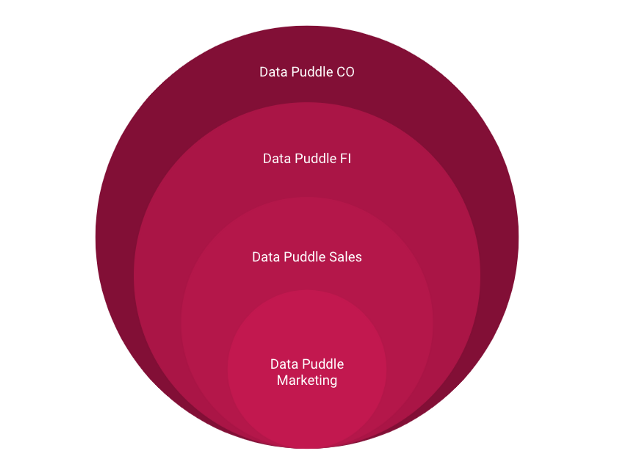From Data Pond to Data Lake: Understanding the Transition
Written on
Chapter 1: Introduction to Data Ponds and Data Lakes
In the realm of data management, the concept of transitioning from a "Data Pond" to a "Data Lake" is often discussed. However, let’s clarify what these terms mean before delving into their differences.
A Data Pond can be defined as a collection of small data pools. These pools, akin to data marts, utilize big data technologies. Essentially, a Data Pond functions as a type of data warehouse, also built on big data frameworks. As noted by Alex Gorelik, Data Ponds are generally structured regionally, focusing on specific departments or teams, thus representing an evolutionary phase of the Data Puddle.

Illustration of a Data Pond— Image by Author
For instance, various reporting ponds might be created based on an Oracle database, serving distinct departments or teams. However, these ponds typically lack connections with other systems, leading to the formation of data silos. While Data Ponds are not inherently erroneous, they do not embody the modern characteristics of a Data Lake.
Section 1.1: What is a Data Lake?
A Data Lake serves as a vast repository of unprocessed data, where the intended use is not yet defined. This contrasts with a Data Warehouse, which stores structured and processed data aimed at specific functions. In a Data Lake, data is stored with minimal alterations, preserving its original format, structure, and detail. This environment accommodates both structured and unstructured data, offering several advantages, such as:
- Integration of diverse data sources, including bulk, real-time, and external data.
- Management of ingested data while maintaining documentation of data structure.
- Utility for analytical reporting and Data Science applications.
Moreover, a Data Lake can incorporate an integrated Data Warehouse to facilitate traditional management reports and dashboards. It prioritizes accessibility across the entire organization, catering to all data users and ensuring easy integration of new data sources.
Video Description: A comprehensive overview of the differences between a Database, Data Warehouse, and Data Lake.
Section 1.2: Transitioning from Data Pond to Data Lake
Through my observations, there are valid reasons for the establishment of Data Ponds, particularly in smaller organizations or in scenarios lacking IT support. However, as these Data Ponds grow and are utilized for broader processes, it becomes crucial to evolve them into a more structured Data Warehouse or Data Lake to prevent the emergence of data silos and to ensure reliable operations.

Data Lake and Warehouse Architecture Concept — Image from Author
Smaller and newer companies may have a distinct advantage in this regard, as they can build their data platforms on cloud solutions like Google or AWS from scratch. For example, services such as Google Storage and BigQuery can be managed with minimal IT involvement. However, it’s illogical for an organization to rapidly transition from a simple setup, like using Google Sheets, to a fully developed Data Lake or Data Warehouse without a significant increase in data sources. Nevertheless, as the volume of data grows, this progression typically becomes beneficial, enhancing data quality, freshness, and computational capacity for analyses.
It's important to also consider governance aspects, data catalogs, user training, and the establishment of a product owner role to oversee the ongoing development of the system, thereby avoiding the pitfalls associated with a Data Swamp.
Video Description: This video explores what a Data Lake is and how it differs from a Data Warehouse.
Another strategy could involve leveraging existing data sources and incorporating them into a Data Lake. For instance, if the marketing department has developed its own Data Lake using Google Sheets and Data Studio, it might be beneficial to integrate these sources into the company’s main Data Lake to eliminate silos and make the data useful across different departments.
Sources and Further Reading
[1] Alex Gorelik, The Enterprise Big Data Lake (2019), pp. 9–10.
[2] Talend, Data Lake vs. Data Warehouse (2022).